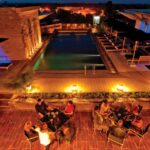“The world is a book, and those who do not travel read only one page.”
If you’re ready to turn the page and discover somewhere new, Conakry, the lively capital of Guinea (often called Guinea-Conakry), is waiting to surprise you.
Guinea is not the same as its smaller neighbor Guinea-Bissau.
It sits along the Atlantic Ocean, bordered by Côte d’Ivoire, Mali, Senegal, Sierra Leone, Liberia, and Guinea-Bissau itself.
Also, its location alone makes it one of the most fascinating West African destinations for travelers eager to experience authentic local life, warm hospitality, and a rich post-colonial history that continues to shape its identity today.
This Conakry travel guide uncovers what makes the city truly special.
You’ll discover the best things to do in Conakry, where to eat traditional food, and how to explore its beaches and markets like a local.
If you’re dreaming of an affordable African adventure that feels real, welcoming, and unforgettable, Conakry is your next stop.
Street Food
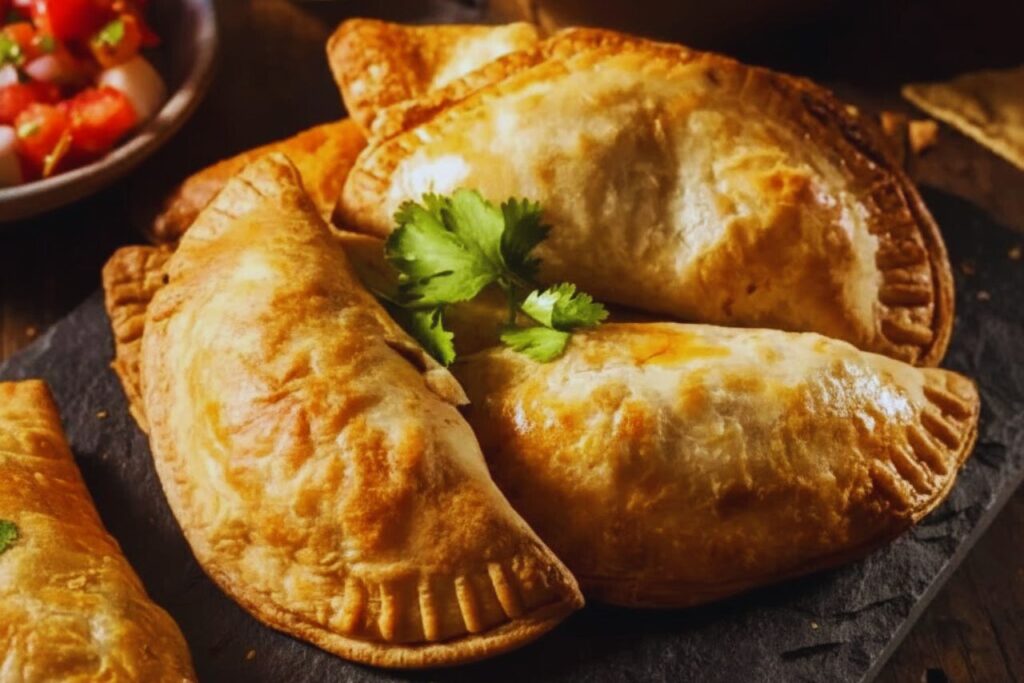
Photo source: anko
Guinean cuisine draws heavily on its coastal position and fertile lands, meaning you get incredibly fresh seafood and a perfect blend of starches and spices.
Start your local food tour with the amazing street food.
First, look for vendors grilling skewers of brochettes, often beef or goat, marinated in a spicy blend of ginger, garlic, and chili, served with a side of onions.
These are quick, cheap, and utterly addictive.
Then there are the fried snacks: crispy fataya (small, savory pastries filled with fish or meat) and beignets (sweet, light fried dough balls).
For a more substantial bite, find a tapalapa stand.
Tapalapa is a long, crusty bread, similar to a baguette but with a unique West African texture. They’ll slice it open and fill it with anything from an omelet to spicy tuna and fresh vegetables.
You can easily get a satisfying, flavorful meal for just a few dollars.
Finally, don’t miss the chance to try a freshly squeezed jus de bissap (hibiscus juice) or jus de gingembre (ginger juice) from a roadside seller; they’re the perfect refreshing antidote to the tropical heat.
Must-Try Dishes
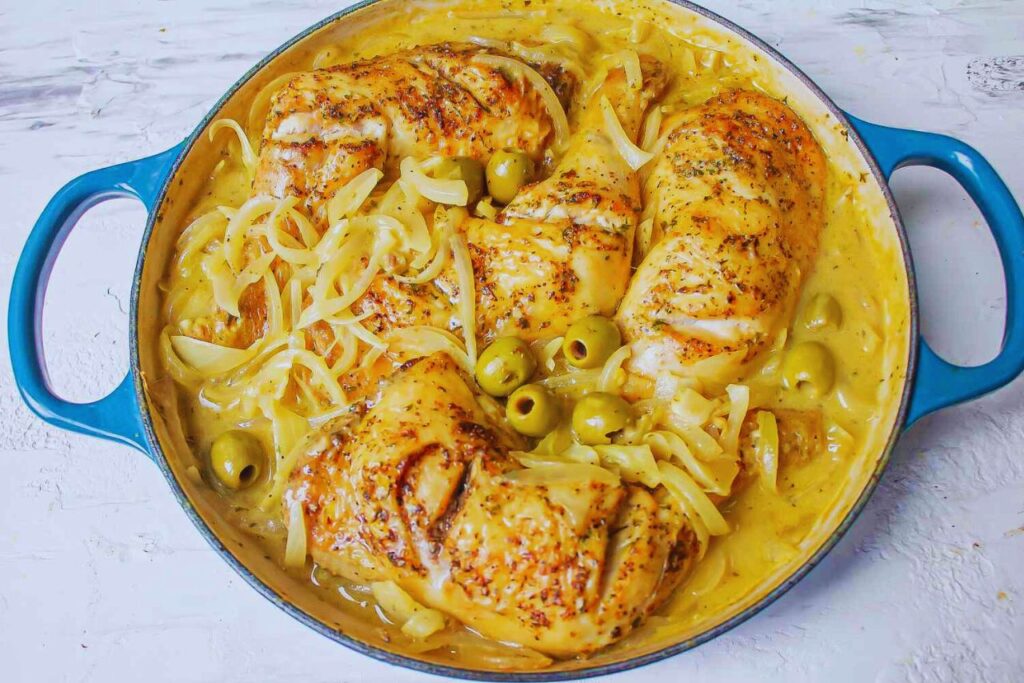
Photo source: simplyrecipes
As in much of West Africa, Guinean cuisine in Conakry is rich.
While the dishes are often similar to those found in neighboring Senegal, they have their own distinct Guinean character.
- Poulet Yassa: Guinea’s national dish. Tender chicken marinated in lemon juice and onions, then stewed until soft in a tangy, savory sauce.
- Bourakhé: A rich cassava leaf stew, sometimes made with sweet potato leaves. Locals cook it with meat or smoked fish and a touch of palm oil.
- Maafe Tiga: A creamy peanut stew that blends groundnuts, meat, and vegetables into a thick, flavorful sauce.
- Attiéké: A fluffy, fermented cassava dish from Côte d’Ivoire that’s become a Conakry staple. It’s best served with fried fish, spicy sauce, and vegetables.
- Jollof Rice: A West African classic you’ll find in every local restaurant.
Seafood, Sun, and Spice
Places like Restaurant La Paillotte offer a wonderful seaside atmosphere where you can dine on fresh lobster or shrimp while watching the fishing boats come and go.
While these sit-down spots cost more than street food, they’re still very affordable by international standards, giving you a top-tier seafood experience without breaking the bank.
Always ask for piment (chili) on the side, but proceed with caution; Guinean chili has a serious kick!
READ ALSO: Ouagadougou City Guide (Burkina Faso): Art, Culture, and Music Scene
Conakry’s Music Scene
Guinea is often cited as the cradle of West African music, and Conakry keeps that legacy alive.
Music here isn’t something confined to concert halls; it pours out of taxis, spills from open doorways, and vibrates from the markets.
As you walk through the streets, music follows you.
Because of this deep passion, Guinea has produced globally renowned artists and unforgettable sounds.
You haven’t truly experienced Conakry until you’ve let its incredible music move you.
Djembe Drums and Griot Melodies:
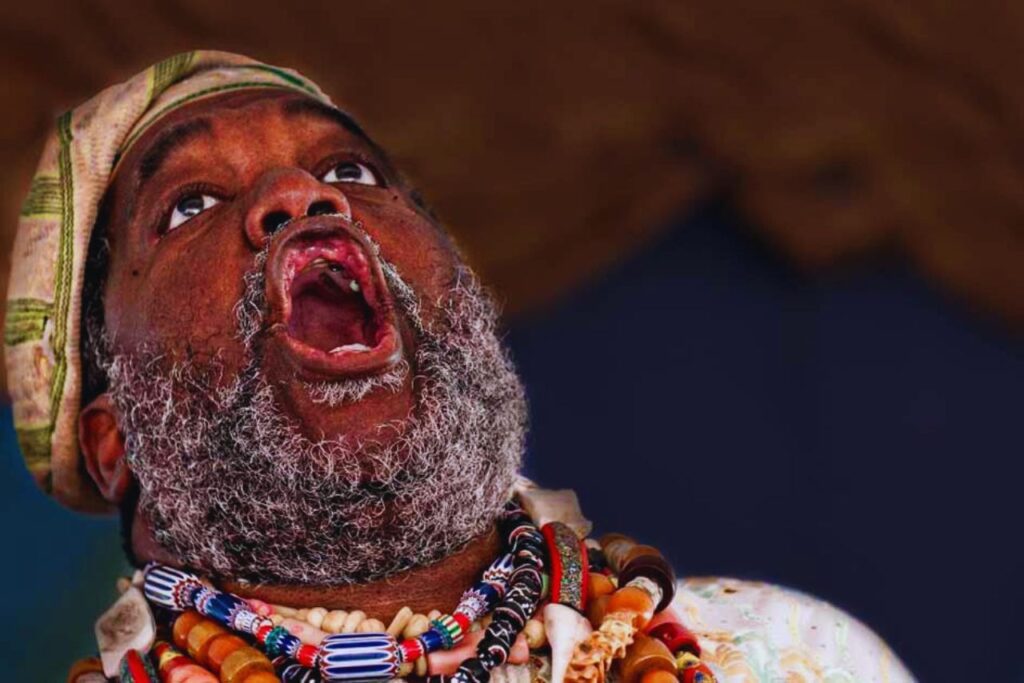
Photo source: visajourneypro
The roots of the country’s music are deeply intertwined with the traditions of the Griot (or Jeli).
The Griots are the traveling storytellers, historians, and musicians of the Mande people. They are the keepers of cultural memory.
Their instruments, the 21-stringed Kora (a harp-lute) and the iconic Djembe drum, are fundamental to the Guinean sound.
Listening to the hauntingly beautiful melodies of the Kora, often accompanied by a Griot singing age-old tales, is one of the most mesmerizing and authentic cultural experiences you can have in Conakry.
This is the sound that connects the present-day city to its deep past.
Where to Catch a Live Show

Photo source: Centre Culturel Franco Guinéen
To really tap into the musical spirit, find a venue hosting live acts.
The Centre Culturel Franco-Guinéen (CCFG) is a reliable place to check for concerts, performances, and cultural events.
They often host a mix of traditional ensembles and modern artists.
Smaller, local venues, especially in the Kaloum area, sometimes have bands playing on weekend evenings.
Just ask a local taxi driver or your hotel host for the meilleur coin de musique (the best music spot).
If you’re lucky enough to be in town during a national holiday or festival, you’ll see the music spill into the streets in a glorious, spontaneous celebration.
READ ALSO: Niamey Travel Guide (Niger): Life by the Niger River & Desert Adventures
Island Life: Day Trips to the Stunning Îles de Los

Photo source: ordersabroad
The bustle of Conakry is exciting, but sometimes, you need an escape.
Fortunately, paradise is just a 20- to 45-minute boat ride away.
The Îles de Los (Islands of the Idols) are an archipelago of islands just off the coast, and they offer the perfect, peaceful contrast to the mainland’s energy.
These islands, chiefly Kassa, Roume, and Tamara, are known for their pristine, golden sand beaches, clear water, and a slow, laid-back pace of life.
A day trip here is mandatory.
They make for one of the most accessible and rewarding island excursions in all of West Africa.
Kassa Island

Photo source: travel2unlimited
Kassa Island is the most developed for visitors, making it a natural first stop. It’s close to Conakry and offers a beautiful, long stretch of coastline.
Once you arrive, you’ll find rustic, beachside restaurants and bars where you can rent a chair, grab a cold drink, and order up an unbelievable plate of grilled fish caught that morning.
The water is safe for swimming, and the atmosphere is pure, unadulterated relaxation.
You can spend the afternoon wandering the trails, meeting local families, and watching the fishing pirogues (long canoes) come ashore.
It’s an easy, welcoming environment that truly lets you switch off and soak up the sun. The simplicity of life here is deeply charming.
Roume Island
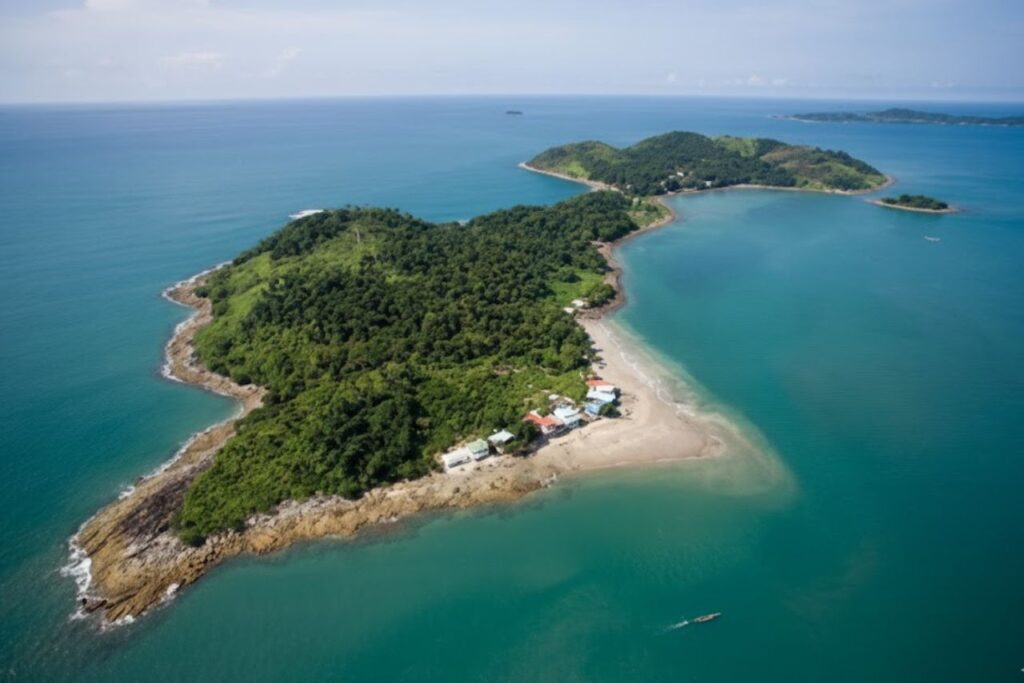
Photo source: Île de Roume – Guinée Conakry
If you crave a bit more history with your tranquility, head over to Roume Island.
Roume holds a somber past, as it was a significant site during the slave trade and colonial era.
You can explore the remnants of old colonial buildings and maybe even a crumbling lighthouse, offering a panoramic view back towards the city.
Roume is generally quieter than Kassa, perfect for a long, reflective walk on its more secluded beaches.
The local people are welcoming, and often, the quietest parts of the island feel like your own private slice of the Atlantic.
Tamara Island

For the true escapist, Tamara Island (sometimes called Île de Fotoba) offers the most untouched beaches and solitude.
This island is the largest and furthest out, attracting fewer day-trippers. You find fewer facilities here, but the trade-off is raw, magnificent natural beauty.
Tamara features long, pristine stretches of sand and thicker vegetation. Bring your own water and snacks, and prepare for a genuinely remote experience.
Tamara gives you a chance to disconnect completely and reconnect with nature.
It’s the perfect end to your island-hopping adventure before you head back to the vibrant chaos of Conakry.
Tumbo Island
You should know that Conakry itself began life on an island.
The city’s original core sits on what was historically known as Tumbo Island.
Over time, development and landfill projects permanently connected Tumbo to the mainland, creating the long stretch of the Kaloum Peninsula where the main government and business districts now thrive.
When you walk the busy streets of Kaloum, you are walking on a piece of reclaimed land that forms the vibrant foundation of the Guinean capital.
This history adds another fascinating layer to your exploration of the city.
READ ALSO: São Tomé and Príncipe Travel Guide: The Secret Island Paradise of West Africa
Popular Spots to See & Visit
The Grand Mosque of Conakry

Photo source: Wikipedia
The impressive Grand Mosque of Conakry is reportedly one of the largest mosques in Sub-Saharan Africa.
Visit respectfully (modest dress, remove shoes).
Nearby, snaking streets lead you to cafés perched over the bay.
It’s a pause in your journey: watch fishing boats, breathe the sea air, then continue on to your next adventure.
Madina Market & Local Rhythm
Wandering through the Madina market brings color, noise and local life.
Sellers call out, fabrics hang in vivid patterns, and you’ll find everything from fresh produce to souvenirs.
This is your chance to see Conakry in full motion, buy a handcrafted item or simply observe the flow of daily routines in Guinea’s lively capital.
Check out the best bars and cafes in Guinea here.
Practical Tips For Guinea Travel
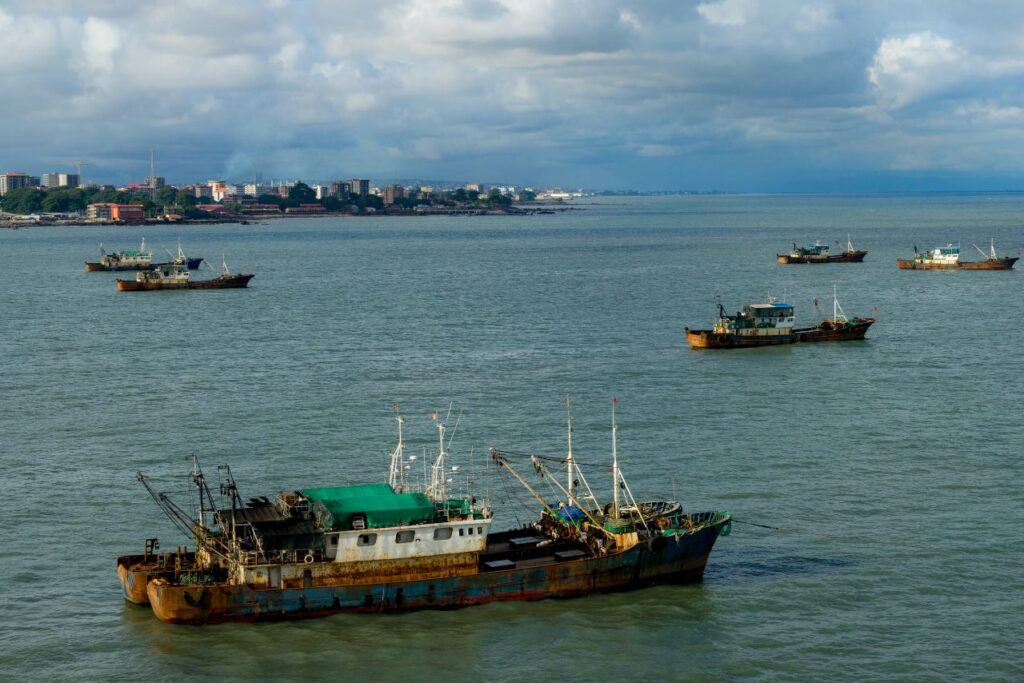
Safety and Travel Prep
Before you go, check travel health guidelines: Guinea has risks like malaria and cholera in some areas.
Vaccines and medical travel insurance are smart.
For safety: avoid showing expensive items, stay alert in crowds, and avoid demonstration zones. Outside of Conakry, travel after dark is not recommended.
Timing & What to Pack
The best time to visit the coastline around Conakry and the islands is during the dry season, roughly November to April, when rainfall and humidity are lower.
Pack light cotton clothes, sandals, swimwear for the beach, a sun hat, and a light jacket for evening breezes on the water.
Also pack a small flashlight and a power bank: outages happen from time to time in guesthouses.
Final Thoughts
If you’ve been waiting for a sign, this is it.
The time to experience the best of Conakry is now.
Book your flight, dive into the lively streets of Guinea’s capital, and let the warmth of the people welcome you.
Go taste the best thieboudienne, dance to the latest Afrobeats, and breathe in the salty air on a quiet Îles de Los beach.
Don’t wait for the perfect moment or the perfect plan. The perfect moment happens when you step outside and explore.







